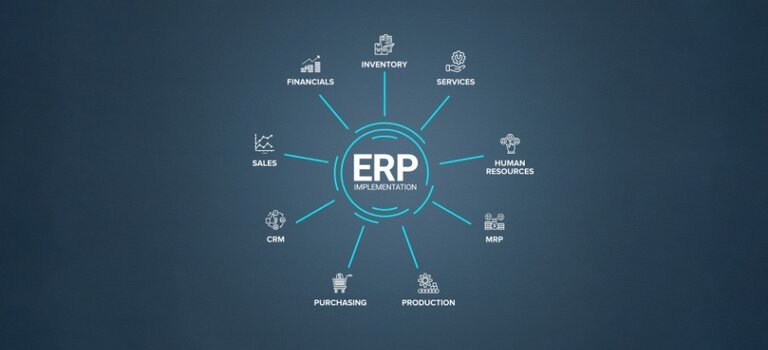Enterprise Resource Planning (ERP) systems have become the backbone of efficiency and productivity. These integrated software solutions streamline processes, manage data, and provide invaluable insights to organizations. However, the promise of ERP can only be fully realized when the implementation process is executed seamlessly.
ERP implementations are complex endeavors that demand meticulous planning, precise execution, and continuous vigilance. It’s a journey fraught with potential pitfalls, but one that can lead to transformative success if navigated correctly. Among the crucial compasses guiding this journey is comprehensive software testing.
In this blog post, we will embark on an exploration of the pivotal role played by comprehensive software testing in ensuring a smooth ERP implementation. We will delve into the various phases of ERP implementation, the types of testing required at each stage, and how these meticulous efforts help mitigate risks and maximize the benefits of ERP systems. So, fasten your seatbelts as we embark on this voyage to uncover the secrets of harmonious ERP implementation through rigorous software testing.
ERP Testing Phases: Building Quality Every Step of the Way
In the journey to ensure a smooth ERP implementation, comprehensive software testing is not a one-size-fits-all endeavor. It’s a meticulous process divided into four distinct phases, each with its unique focus, objectives, and methodologies. Let’s explore these ERP testing phases, understanding how they contribute to the success of your ERP project.
- Unit Testing: Scrutinizing the Foundation
Objective: To evaluate individual modules or components of the ERP system for functionality and logic.
In the first phase, known as Unit Testing, the development or technical team takes center stage. Armed with specialized tools like JUnit, NUnit, or TestNG, they meticulously scrutinize each module or component in isolation. The goal here is to ensure that these building blocks of the ERP system function as intended and that their underlying logic holds up under scrutiny.
- Integration Testing: Ensuring Seamless Harmony
Objective: To test the interactions and dependencies between modules or components.
The ERP landscape is a complex web of interconnected modules, and in the Integration Testing phase, it’s time to ensure these connections are seamless. Testers or the functional team step in with tools such as SoapUI, Postman, or Selenium. They examine how different modules interact, identifying and rectifying any issues related to data flow, communication, and dependencies. This phase is crucial for achieving ERP system cohesion.
- System Testing: Evaluating the Whole Picture
Objective: To evaluate the entire ERP system for performance, security, usability, reliability, and compatibility.
In the System Testing phase, we zoom out to view the ERP system as a holistic entity. Testers, often from the quality assurance team, scrutinize the system’s performance, security, usability, reliability, and compatibility. Specialized tools like LoadRunner, JMeter, or OWASP ZAP come into play to simulate real-world scenarios, ensuring the ERP system can withstand the demands of your business operations. This phase acts as a final checkpoint before handing the system over to end-users.
- User Acceptance Testing: The End-User Verdict
Objective: To assess the ERP system’s suitability and satisfaction from the end-users’ perspective.
In the User Acceptance Testing (UAT) phase, the spotlight shifts to your end-users and stakeholders. They become the judges of the ERP system’s suitability and satisfaction. Tools like TestRail, TestLink, or Jira empower them to perform real-world tests, ensuring the system aligns with their needs and expectations. Their feedback is invaluable in fine-tuning the ERP system for its eventual deployment.
These four phases of ERP testing form a robust framework that ensures your ERP system not only functions correctly but also meet the performance, security, usability, and reliability standards your business demands. By diligently following this testing roadmap, you pave the way for a smooth and successful ERP implementation.
ERP Testing Challenges: Navigating the Complex Terrain
Testing ERP systems is a formidable undertaking, marked by its own set of intricate challenges. These challenges encompass a multitude of elements and involve various stakeholders. Let’s delve into some of the common hurdles that ERP testing encounters:
- High Complexity: Taming the Intricacies
ERP systems are sprawling landscapes of complexity. They are designed to integrate various business processes and functions seamlessly, which means there are countless scenarios, interactions, and dependencies to consider. Testing every possible permutation can be a monumental task. Moreover, identifying and isolating the root causes of issues within this intricate web can be a formidable challenge in itself.
- Cost and Resource Intensity: A Heavy Investment
The cost factor looms large when it comes to ERP testing. ERP systems are not only expensive to implement but also demand significant resources for testing. Maintaining and updating test environments, platforms, and devices can strain budgets. Hiring and training a skilled testing team can also be a substantial investment. Additionally, the procurement and utilization of specialized test tools can add to the financial burden.
- Risk Sensitivity: Treading Cautiously
ERP systems are the lifeblood of an organization’s operations. They are critical and sensitive to even the slightest disruptions. The stakes are high, making it paramount to avoid errors, failures, data loss, or any compromise in quality, performance, or security. Failing to meet business, user, or regulatory expectations can have far-reaching consequences, both operationally and reputationally.
Navigating these challenges in ERP testing requires a strategic approach, robust planning, and a dedicated commitment to quality assurance. In the following sections, we’ll explore strategies and best practices to overcome these obstacles and ensure the successful testing of your ERP system.
In the intricate world of ERP implementation, rigorous testing isn’t just a choice; it’s a necessity. We’ve explored the complexities and challenges that come with this territory. Now, it’s your turn to act. Prioritize comprehensive ERP testing, allocate resources wisely, and engage your end-users. Make testing an ongoing commitment, and you’ll not only ensure a smoother ERP implementation but also set the stage for long-term success. Your ERP system holds the potential to transform your business—let effective testing be the key to unlocking that potential. Don’t delay; start your ERP testing journey today and embark on a path to efficiency and growth.

Aimee Garcia is a Marketing Consultant and Technical Writer at DailyTechTime. She has 5+ years of experience in Digital Marketing. She has worked with different IT companies.



